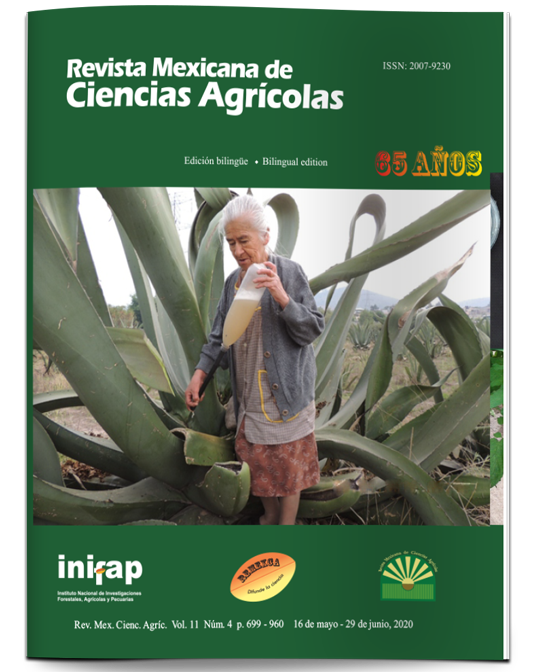Forage behavior of the herbaceous stratum in different tree densities of low deciduous forest
DOI:
https://doi.org/10.29312/remexca.v11i4.2467Keywords:
forage biomass, herbaceous stratum, light intensity, Sierra de Huautla, silvopastoralismAbstract
The shade of the trees projected on the herbaceous stratum that grows under the canopy represents an undesired effect for livestock farmers for forage production in the silvopastoral system. In order to determine the dry matter production and the floristic composition of the herbaceous stratum with different amounts of photosynthetically active radiation, three plots with low tree density (BDA; 50 to 200), moderate tree density (MDA; 201 to 350) and high tree density (ADA; 350 to 500) trees ha-1 were selected. In each plot, photosynthetically active radiation (RFA) that affects the herbaceous stratum was estimated and the dry matter production (DM) of the forage herbaceous plants present during 15 weeks of the rainy season was determined. The intensity of light under the canopy and the production of herbaceous forage biomass in BDA, MDA and ADA were 8 594, 6 437 and 3 801 MJ m2 year-1 and 2 859, 1 988 and 1 679 kg of DM ha-1, respectively. The number of herbaceous species in BDA, MDA and ADA was 38, 48 and 27, respectively, although the dominant species, with more than 80% of the botanical composition, were only six. It is concluded that the tree density modifies the amount of light that falls on the herbaceous stratum, affecting the biomass production and the floristic composition of forage herbaceous plants that grow under the tree canopy in a traditional silvopastoral system in the Low Deciduous Forest.
Downloads
Published
How to Cite
Issue
Section
License
Copyright (c) 2020 Revista Mexicana de Ciencias Agrícolas

This work is licensed under a Creative Commons Attribution-NonCommercial 4.0 International License.
The authors who publish in Revista Mexicana de Ciencias Agrícolas accept the following conditions:
In accordance with copyright laws, Revista Mexicana de Ciencias Agrícolas recognizes and respects the authors’ moral right and ownership of property rights which will be transferred to the journal for dissemination in open access. Invariably, all the authors have to sign a letter of transfer of property rights and of originality of the article to Instituto Nacional de Investigaciones Forestales, Agrícolas y Pecuarias (INIFAP) [National Institute of Forestry, Agricultural and Livestock Research]. The author(s) must pay a fee for the reception of articles before proceeding to editorial review.
All the texts published by Revista Mexicana de Ciencias Agrícolas —with no exception— are distributed under a Creative Commons License Attribution-NonCommercial 4.0 International (CC BY-NC 4.0), which allows third parties to use the publication as long as the work’s authorship and its first publication in this journal are mentioned.
The author(s) can enter into independent and additional contractual agreements for the nonexclusive distribution of the version of the article published in Revista Mexicana de Ciencias Agrícolas (for example include it into an institutional repository or publish it in a book) as long as it is clearly and explicitly indicated that the work was published for the first time in Revista Mexicana de Ciencias Agrícolas.
For all the above, the authors shall send the Letter-transfer of Property Rights for the first publication duly filled in and signed by the author(s). This form must be sent as a PDF file to: revista_atm@yahoo.com.mx; cienciasagricola@inifap.gob.mx; remexca2017@gmail.
This work is licensed under a Creative Commons Attribution-Noncommercial 4.0 International license.



